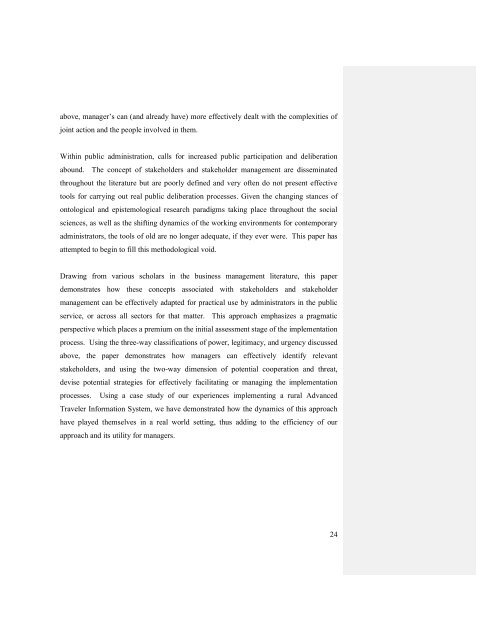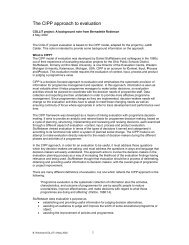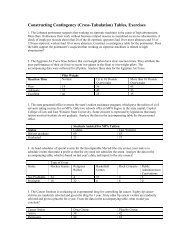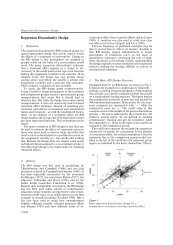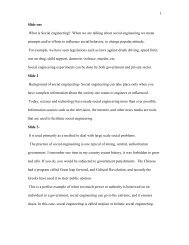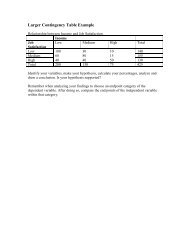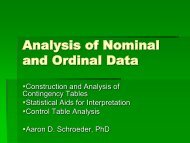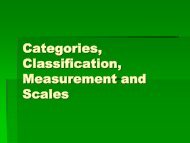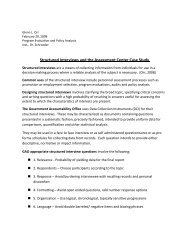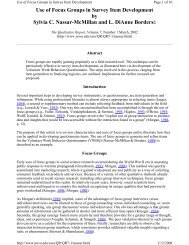The Problem
The Problem
The Problem
You also want an ePaper? Increase the reach of your titles
YUMPU automatically turns print PDFs into web optimized ePapers that Google loves.
above, manager’s can (and already have) more effectively dealt with the complexities of<br />
joint action and the people involved in them.<br />
Within public administration, calls for increased public participation and deliberation<br />
abound. <strong>The</strong> concept of stakeholders and stakeholder management are disseminated<br />
throughout the literature but are poorly defined and very often do not present effective<br />
tools for carrying out real public deliberation processes. Given the changing stances of<br />
ontological and epistemological research paradigms taking place throughout the social<br />
sciences, as well as the shifting dynamics of the working environments for contemporary<br />
administrators, the tools of old are no longer adequate, if they ever were. This paper has<br />
attempted to begin to fill this methodological void.<br />
Drawing from various scholars in the business management literature, this paper<br />
demonstrates how these concepts associated with stakeholders and stakeholder<br />
management can be effectively adapted for practical use by administrators in the public<br />
service, or across all sectors for that matter. This approach emphasizes a pragmatic<br />
perspective which places a premium on the initial assessment stage of the implementation<br />
process. Using the three-way classifications of power, legitimacy, and urgency discussed<br />
above, the paper demonstrates how managers can effectively identify relevant<br />
stakeholders, and using the two-way dimension of potential cooperation and threat,<br />
devise potential strategies for effectively facilitating or managing the implementation<br />
processes. Using a case study of our experiences implementing a rural Advanced<br />
Traveler Information System, we have demonstrated how the dynamics of this approach<br />
have played themselves in a real world setting, thus adding to the efficiency of our<br />
approach and its utility for managers.<br />
24


